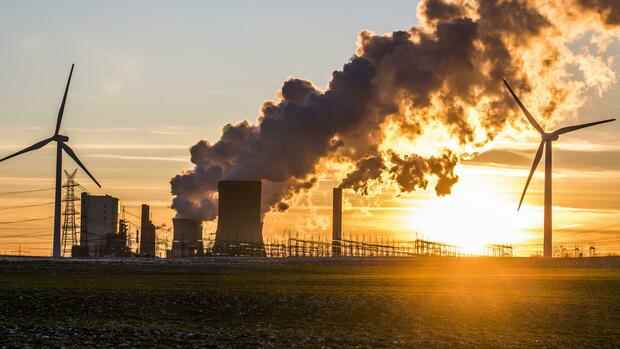An accelerated phase-out of coal poses challenges for network operators.
(Photo: action press)
Berlin An early phase-out of coal poses challenges for the operators of the electricity transmission networks. According to an analysis by the transmission system operator Amprion, which will be presented on Tuesday, there is a “considerable risk” that a coal phase-out by 2030 will lead to a reduction in the current level of security of supply. It is available to the Handelsblatt.
The network operator emphasizes that the coalition agreement between the SPD, the Greens and the FDP is expressly welcomed. However, the company warns that security of supply should never be made available. Amprion therefore makes an early phase-out of coal dependent on certain conditions being met.
In the coalition agreement between the SPD, the Greens and the FDP it is said that “ideally” the coal phase-out “will be successful by 2030”. According to the coal phase-out law, coal-fired power generation will not end in this country until 2038. At the same time, the SPD, Greens and FDP want to significantly accelerate the expansion of renewable energies. By 2030, 80 percent of electricity consumption should come from renewable sources. So far, the target for 2030 was only 65 percent.
According to the Amprion analysis, an accelerated phase-out of coal and a simultaneous acceleration of the expansion of renewables will result in “significant CO2 reductions”; However, a number of “technical issues” would have to be taken into account. The need to intervene in network operations is increasing significantly.
Top jobs of the day
Find the best jobs now and
be notified by email.
Some of the coal-fired power plant capacities to be shut down must be “temporarily transferred to the grid reserve for reasons of systemic relevance”. Power plants that are part of the network reserve no longer participate in the electricity market.
They are only started up if, for example, wind power is being produced in northern Germany that cannot be transported to the south due to insufficient transmission network capacities. The power plants from the network reserve then produce the required electricity south of the corresponding network bottlenecks.
Compensation measures stabilize the system
Amprion warns that the rapid phase-out of coal and the more rapid expansion of renewables will reduce the robustness of the system. The compensation measures provided for in the 2035 network development plan would have to be brought forward to 2030. Amprion particularly includes the need for instantaneous reserves.
Up to now, the momentary reserve has been available for the electricity system due to the inertia of rotating masses of conventional power plants. It enables the frequency maintenance in the power grid, i.e. the permanent balance between generation and consumption. If a large part of the conventional power plants are eliminated, the corresponding instantaneous reserve will also be lost. A replacement is needed for this, warns Amprion.
The situation is similar with reactive power, which enables the flow of electricity in the AC network. It is also generated to a large extent by conventional power plants. Equalization must also be provided here.
Amprion is convinced that in future the contributions to system stabilization that conventional power plants have made “on the side” must be made available via a “system market”. The transmission system operator calls for the regulatory prerequisites to be created by politicians. In the event of an accelerated phase-out of coal, “grid-related issues must be taken into account”.
Amprion warns that in times of scarcity Germany’s dependency on imports to meet demand increases. “Without significant replacement investments in secured capacities or the provision of reserve power plants, it is even possible in isolated cases to under-cover loads or involuntary load cut-offs,” the analysis warned. In other words: electricity consumers would have to be taken off the grid in order to keep the grid stable.
It is undisputed that with an early exit for coal, additional secured power plant capacity, for example in the form of new gas-fired power plants, is recognized and is also recognized by the traffic light coalitionists. However, it is still unclear how the construction of such facilities will be encouraged.
More: Electricity gap looming: Why the goals of the coalition agreement can hardly be mastered
